Gimbels Department Store, 1925
It was part of the largest department store in the nation, and soon, in the world.
Remember Gimbels? The department store chain first found success in Milwaukee in 1887 when Adam Gimbel, a young Bavarian Jewish immigrant, opened his first emporium here.
Gimbel had operated dry goods stores in Vincennes, Indiana and Danville, Illinois before finally deciding on the rapidly growing city of Milwaukee. He would chose a good site on Wisconsin Ave., between the Milwaukee River and what now is Plankinton Ave. The business would over time expand, eventually filling the entire block. The white terracotta store that remains today was completed in 1925.
This is a postcard view photographed just a short time after the building’s completion. Notice an earlier Wisconsin Ave. bridge complete with electric streetcar wires.
Gimbels had ambitious nation-wide ambitions. In 1894 Gimbel opened a store in Philadelphia and in 1910 the famous New York store opened, creating a retailing battle with arch-rival Macy’s. By 1925 Gimbels was the largest department store chain in the nation. By 1930, Gimbels had seven flagship stores throughout the country and net sales of $123 million with 20 sites, making it the largest department store corporation in the world.
In 1962, Gimbels acquired Milwaukee competitor Schuster’s, and for years operated stores here known as Gimbels Schuster’s. By 1965, Gimbel Brothers Inc. operated 53 stores throughout the country, which included 22 Gimbels, 27 Saks Fifth Avenue stores, and four Saks 34th St. The Saks stores were the result of a merger with Gimbels in the 1920s.
Gimbels was acquired in 1973 by Brown & Williamson, which later created the BATUS Retail Group as a subsidiary company for its retail holdings. In 1986 BATUS decided to close its Gimbels stores. (The Saks still survive today under different owners.) Chicago’s Marshall Fields would purchase the downtown Milwaukee Gimbels stores and operated there for some years. But the spark was lost and the store would permanently close in 1997 after Marshall Fields was acquired by Dayton’Hudson. Today none of these names remain as Macy’s would finally acquire all of these chains and rename them all Macy’s. At least this classic building still survives, now housing offices, retail and a hotel.
Jeff Beutner is a collector of photographs, postcards and stereoviews of old Milwaukee. This column features these images, with historical commentary by Beutner.
View From Atop the Gimbels Building
Yesterday's Milwaukee
-
When Boston Store Was Big
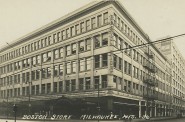 Apr 18th, 2018 by Jeff Beutner
Apr 18th, 2018 by Jeff Beutner
-
Sherman Park Has Been a Melting Pot
 Aug 25th, 2017 by Jill Florence Lackey, PhD
Aug 25th, 2017 by Jill Florence Lackey, PhD
-
The Rise and Fall of Bronzeville
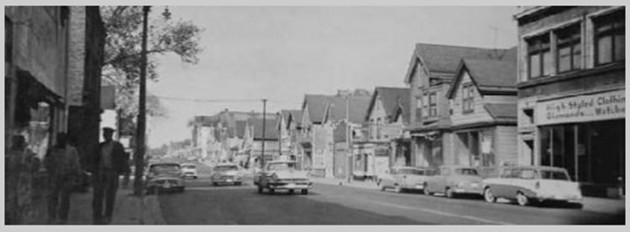 Aug 5th, 2017 by Jill Florence Lackey, PhD
Aug 5th, 2017 by Jill Florence Lackey, PhD

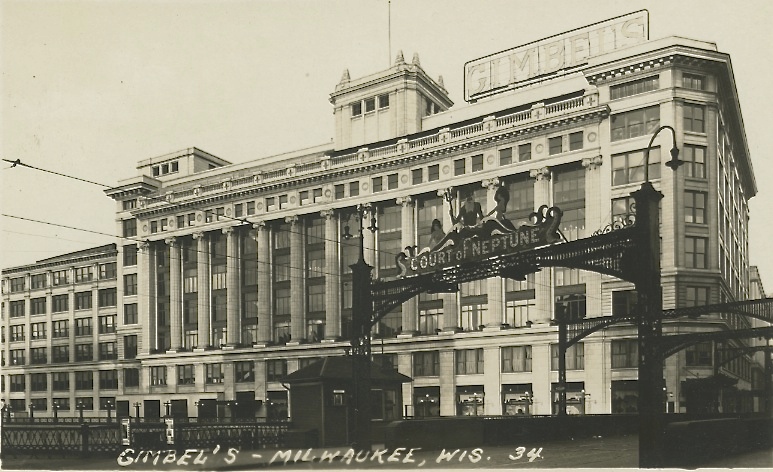
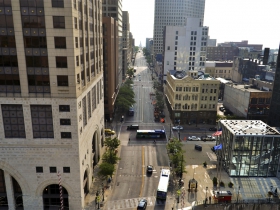
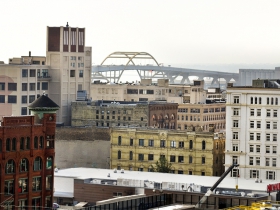
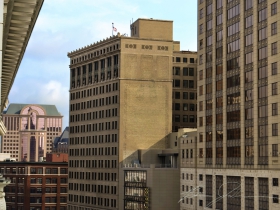
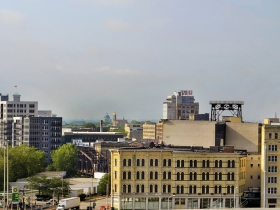
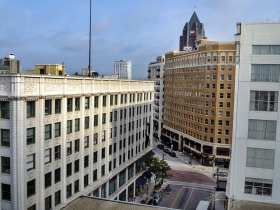
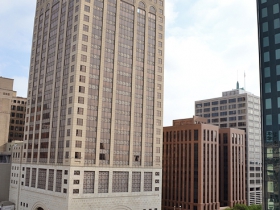















Holy cripes! Wouldn’t it be great if that “Court of Neptune” gate in the cover photo had survived?! I suppose it went along with the streetcar. 🙁
a nice story but a lot of important details were either left out or simply not known to the author. Key is the decision made by BATUS not to allow Gimbel Milwaukee executives to self-purchase the Milwaukee stores and instead to make Marshall Fields take on several additional Wisconsin based branches which in turn saddled them with debt and assisted the Marshall Field enterprise with its demise. Marshall Fields and Gimbels never had the same customer base and unfortunately a board decision made in London never took into account this key factor. Had the Milwaukee based executives been able to purchase their very profitable store Gimbels would still be in business today.